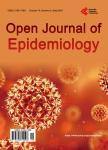Non-Communicable Chronic Diseases and Structural Indicators in an Epidemiological Transition Country
Non-Communicable Chronic Diseases and Structural Indicators in an Epidemiological Transition Country作者机构:Escuela de Medicina Facultad de Ciencias Médicas de la Salud y de la Vida Universidad Internacional del Ecuador Quito Ecuador Grups de Reserca d’Amèrica i àfrica Llatines-GRAAL Cerdanyola del Vallés España Facultad de Ciencias Administrativas Universidad Internacional del Ecuador Quito Ecuador El Colegio de la Frontera Sur-ECOSUR San Cristóbal de Las Casas Chiapas México Instituto Geográfico Militar Seniergues E4-676 y Gral. Telmo Paz y Miño Quito Ecuador Facultad de Medicina Universidad Tecnológica Equinoccial Bourgeois Quito Ecuador Unidad de Bioestadística Facultad de Medicina Universidad Autónoma de Barcelona Cerdanyola del Vallés Barcelona Spain
出 版 物:《Open Journal of Epidemiology》 (流行病学期刊(英文))
年 卷 期:2020年第10卷第1期
页 面:32-42页
学科分类:07[理学] 0701[理学-数学] 070101[理学-基础数学]
主 题:Chronic Illness Social Inequality Statistical Analysis Policy Process Ecuador
摘 要:Objective: To determine associations between standardized prevalence ratios of Metabolic Syndrome (MS), High Blood Pressure (HBP), and Obesity (O) with structural factors in ecuadorian population aged 20 to 59. Methods: An ecological study was conducted through data from the Ecuador’s National Health and Nutrition Survey 2013-2014, and National Census. Standardized prevalence ratio (SPR) variability was analyzed with Poisson multiple regression models (adjusted Relative Risk). Results: The SPR variability for the three diseases was associated with non-affiliation to social security, and inversely related to lower urbanization. HBP and O were associated with functional illiteracy and higher rates of primary care physicians/1000 inhabitants. HBP and MS were related to poor housing. Conclusions: Policies of non-communicable chronic diseases control in ecological transition countries need to take structural variations into account.



